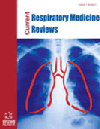
Full text loading...
We use cookies to track usage and preferences.I Understand
Breathing is an automatic process generated by the central nervous system, crucial for the homeostasis of several body processes. This vital process is underpinned by an intricate network in which distinct functional and anatomical factors and structures play a role. Transcription factors (i.e., PHOX2B and Pbx proteins), as well as neuromodulators (i.e., serotonin, noradrenaline, GABA, and glycine), have been demonstrated as implicated in the regulation of breathing. Besides, the several intertwined excitatory and inhibitory brainstem neural circuits comprising the so-called central pattern generator (CPG) have recently demonstrated a potential role of cerebellar structures and circuits in coordinating the complex and coordinated respiratory act in eupnea. A disruption affecting one of these components, which may also occur on a genetic basis, may indeed result in complex and heterogeneous disorders, including neurodevelopmental ones (such as Rett and Prader-Willi syndrome), which may also present with neuropsychiatric and breathing manifestations and potentially lead to sudden infant death syndrome (SIDS). Herein, we discuss the main factors and systems involved in respiratory control and modulation, outlining some of the associated neurodevelopmental disorders (NDDs) deriving from an impairment in their expression/function. Further studies are needed to deepen our knowledge of the complexity underpinning “breathing” and the relation between respiratory implications and congenital and developmental disorders.

Article metrics loading...

Full text loading...
References


Data & Media loading...

